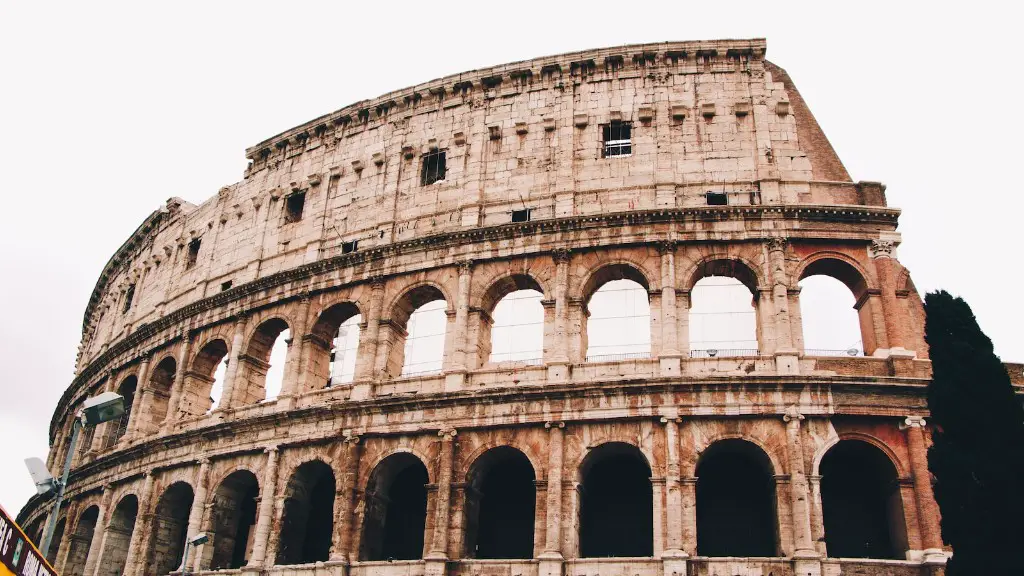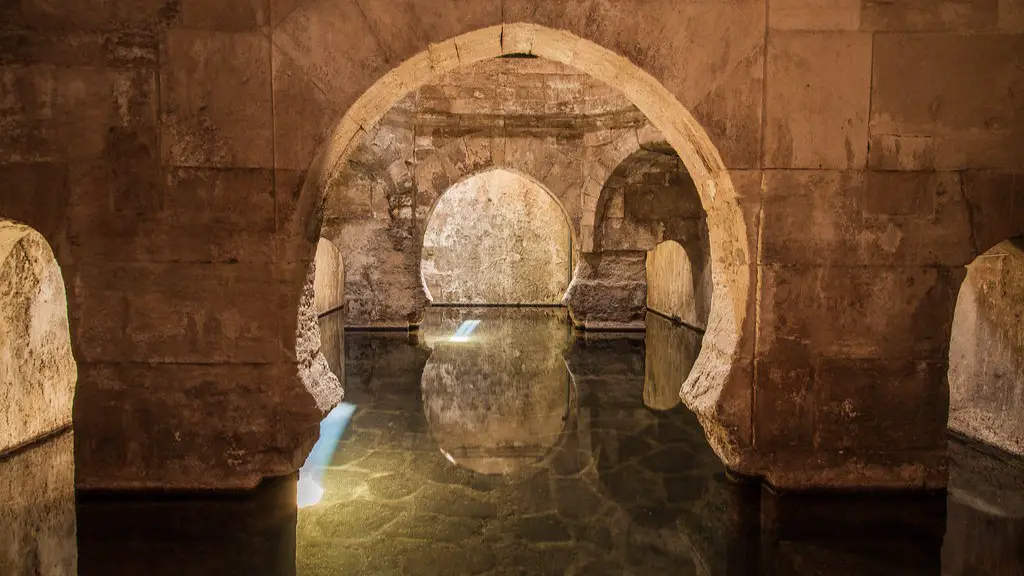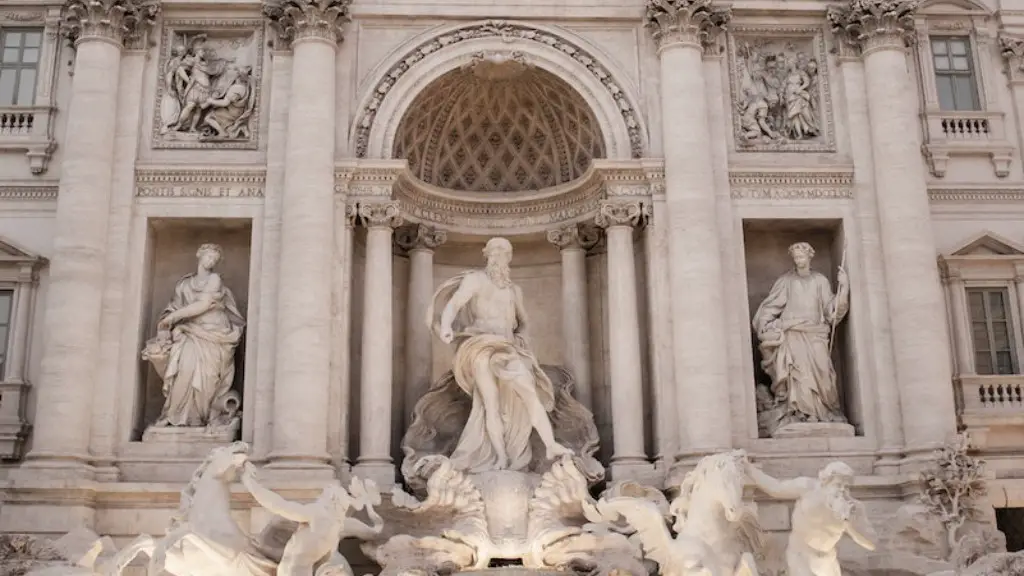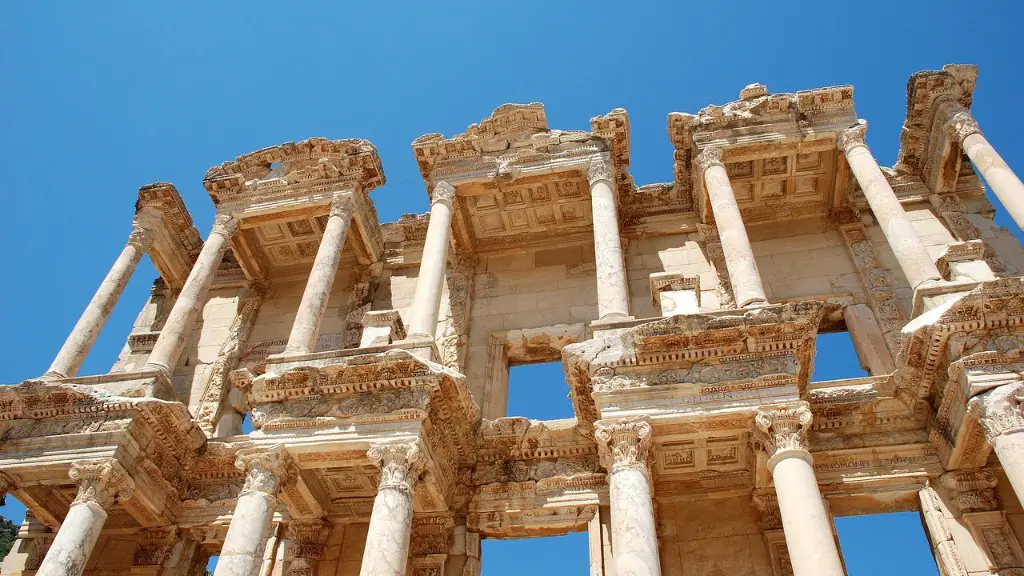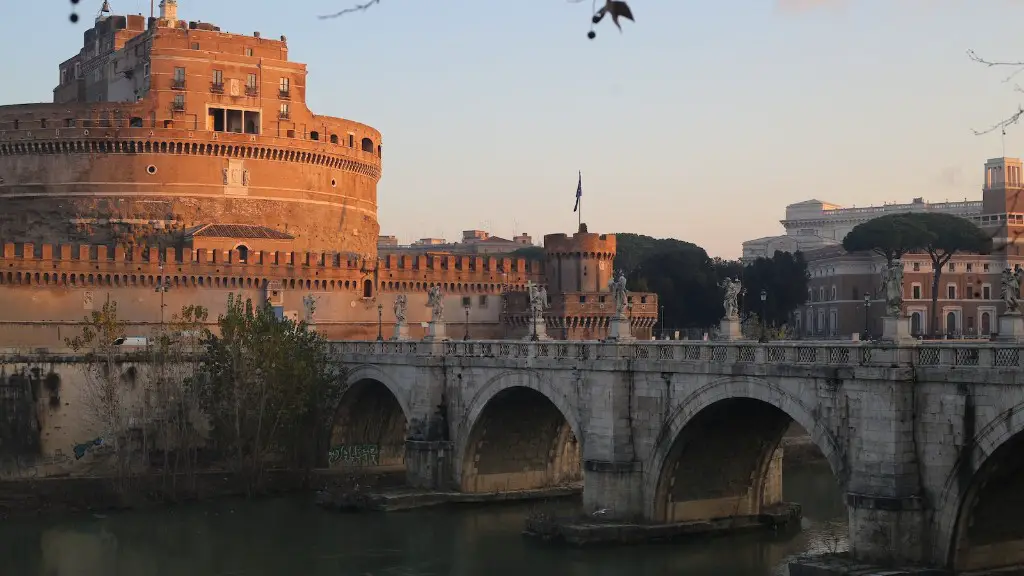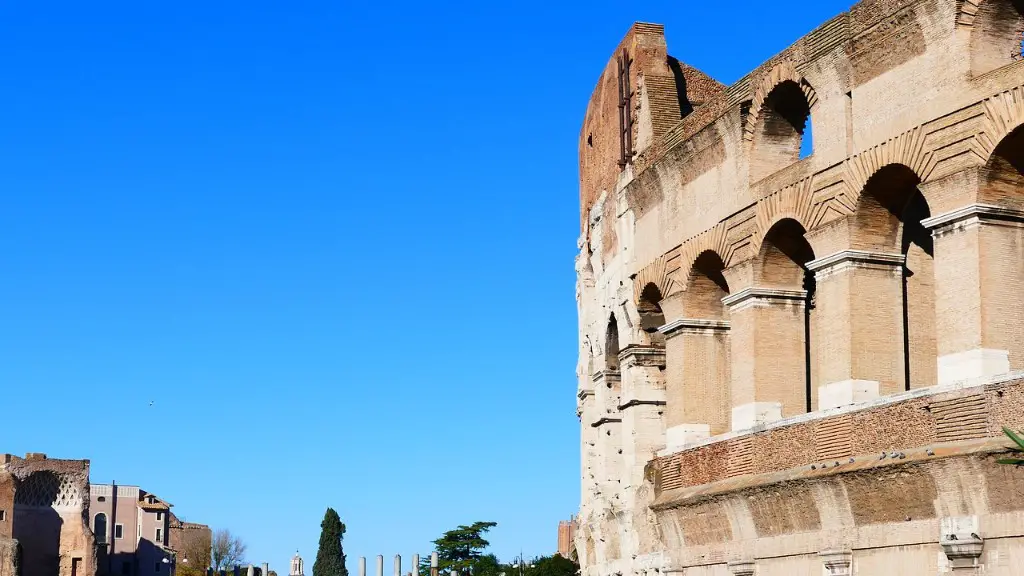The Ancient Romans were an incredibly inventive people and had many achievements. Concrete or ‘opus caementicium’ was one of their most impressive accomplishments and it proved to be an incredibly powerful material with tremendous potential.
It is believed that the first concrete was used in 500 BC and then perfected in 200 BC by the Ancient Romans. The material was said to be made from a mix of quicklime, pozzolana, and water. Quicklime, or calcium oxide, is an alkaline material that helps to form limestone when exposed to water. Pozzolana is a volcanic ash created from volcanic ash and clay that is used as an aggregate material in concrete. When wet, pozzolana creates a cement-like material that binds the components of concrete together.
The ancient Romans were familiar with natural stone and pottery and believed that concrete could be used to build structures. They then went on to develop a new type of concrete, which had far superior workability to natural stone. This new, more advanced form of concrete could be used to make structures which were far more durable, and would also hold up in buildings that underwent earthquakes. This is due to the fact that the primary components of concrete, lime, quicklime and pozzolana, are chemically combined, meaning that when subjected to vibrations, the components will become closer together and this reduces the risk of fracturing, unlike natural stone.
This advanced cement was able to be moulded into various shapes, making it possible for the ancient Romans to create buildings that were more aesthetically pleasing, such as the Pantheon in Rome. The use of concrete also allowed them to create complex shapes, such as vaults and domes.
As well as being used as a building material, concrete was also used as a decorative material and was used to create impressive sculptures, such as the Statue of Augustus in Rome. As a result, concrete played an important role in the Ancient Roman Empire.
Concrete was an incredibly important and influential invention of the Roman civilization and its use has continued to this day. Concrete is used today in a variety of structures including buildings, bridges, domes and sculptures. Its use in modern construction has been largely inspired by the Ancient Romans.
Applications of Ancient Roman Concrete
The applications of ancient Roman concrete are vast and are still found in modern applications in industries such as construction and engineering. The concrete can be used for a variety of structures such as buildings, bridges, sculptures and even aqueducts. It can also be used for foundations and underground structures, as well as paving slabs and flooring.
The use of ancient Roman concrete also enables the construction of more complex structures than those made from natural stone, as it can be moulded into whatever shape is desired. This has allowed for some impressive examples of architecture and engineering to be created, such as the Pantheon in Rome and the aqueducts in Spain.
The durability of ancient Roman concrete also makes it a popular choice for modern construction, as it is able to withstand pressure, temperature changes and vibrations, which makes it an ideal material for buildings that have to withstand earthquakes.
The use of pozzolana adds a unique character to ancient Roman concrete as it makes the material harder and more water resistant than other forms of concrete. This means that the concrete is able to withstand extreme weather conditions and is an ideal material for use in areas with large amounts of moisture, such as near the sea.
The use of pozzolana has also enabled the Ancient Romans to create more beautiful and structurally sound buildings, as the pozzolana is able to fill the gaps between the other components of the structure and make the entire structure more solid and structurally sound.
Modern Uses of Ancient Roman Concrete
In modern times, concrete is still widely used and is a major component of many modern buildings, bridges and other structures. The Roman style of concrete is still popular in many places due to its ideal properties, such as its hardiness, durability and water resistance.
In addition to its uses in the construction industry, it is also used in other industries such as engineering, as it can be used as a unique material for creating complex shapes and structures. It is also used in, sculpture and pavement as it is able to withstand extreme weather and is aesthetically pleasing, meaning it can be used to enhance the look of a building.
Ancient Roman concrete is also popular amongst modern architects and designers, as it gives them the ability to create unique works of art and interesting structures, as well as being an ecologically friendly material, as it does not release any carbon dioxide emissions.
Ancient Roman concrete is still widely used and is still a popular choice for many modern applications due to its many beneficial properties. It is renowned for its durability, strength and ability to withstand extreme weather and vibrations.
Environmental Impact of Ancient Roman Concrete
Unlike today’s methods of manufacturing concrete, the methods used by Ancient Romans didn’t produce vast amounts of emissions as no fuel was required to manufacture it. This means that it was a much more environmentally friendly and sustainable material when compared to modern concrete.
The Ancient Romans also had different methods of quarried stone which used to create the quicklime and pozzolana components, which focused on preserving the environment. This meant that the methods used were much less damaging and the quarried stone was more easily returned to the environment.
In addition, the use of pozzolana in the concrete meant that concrete waste was less of a problem and it was not necessary to dispose of it in such large quantities. This meant that the environment was protected, as the concrete and other components could be easily recycled. As a result, the use of Ancient Roman concrete had a much less damaging impact on the environment than today’s methods of manufacturing concrete.
Myths and Misconceptions of Ancient Roman Concrete
There is a popular misconception that Ancient Roman concrete is made simply from lime and water, however, there are several components that go into making Ancient Roman concrete. The quicklime, pozzolana, and water is the primary components, however, the Ancient Romans also used other materials such as sand, gravel, and ash, in order to make a stronger and longer-lasting concrete.
Another common misconception is that Ancient Roman concrete was only used for aesthetic purposes. Whilst it certainly enhanced the look of structures, for example in the Pantheon, it was mainly intended for practical use such as pavement and its use in buildings, bridges and aqueducts. The use of concrete was necessary for the construction of these structures as it was the only material strong and durable enough to survive the earthquakes and extreme weather conditions common in Ancient Rome.
Finally, some people wrongly assume that Ancient Roman concrete was a weaker and less durable concretes than the concrete used today. This is not the case as there have been many studies that have demonstrated the superior strength and durability of Ancient Roman concrete when compared with modern concrete.
Cultural Impact of Ancient Roman Concrete
Ancient Roman concrete has had a major cultural impact and it has been used to construct some of the most impressive structures in the world. The Pantheon was one of the first buildings to be made out of Ancient Roman concrete and it is a testament to its longevity as it has been standing for over 2000 years.
The use of Ancient Roman concrete enabled the Ancient Romans to construct complex and aesthetically pleasing buildings much quicker than with natural stone, which allowed them to expand and grow at an incredible rate. This resulted in the construction of immense structures, such as the Coliseum, which have become symbols of Ancient Roman culture.
The use of Ancient Roman concrete has had a major influence on the modern world, as it has revolutionised the construction industry and enabled architects and engineers to create innovative and aesthetically pleasing structures with high levels of strength and durability.
Importance and Significance of Ancient Roman Concrete
Ancient Roman cement has been an influential material and it is still used in modern contexts, due to its durability, strength, aesthetic and environmental credentials. Its importance in the Ancient Roman Empire was immense and it allowed the Romans to construct structures and sculptures of huge scale and complexity.
The use of Ancient Roman concrete has also had an effect on modern construction, as it has enabled more complex and efficient structures to be created. It has also had a major influence on the aesthetics of modern architecture, as it has enabled architects and engineers to create structures that are both aesthetically pleasing and structurally sound.
Ancient Roman concrete is also an important part of modern culture, as it has allowed us to create structures of immense beauty and complexity. It is not just a material, but a symbol of the Ancient Roman Empire and its ingenuity.
Conclusion
The invention of Ancient Roman concrete was an incredibly important and influential event in history and its impact can still be seen today. It revolutionised the construction industry and enabled the Romans to construct structures of immense scale and complexity as well as paving the way for modern construction methods. It has also had a major impact on modern architecture and culture and is still used today for its aesthetic and environmental benefits.
